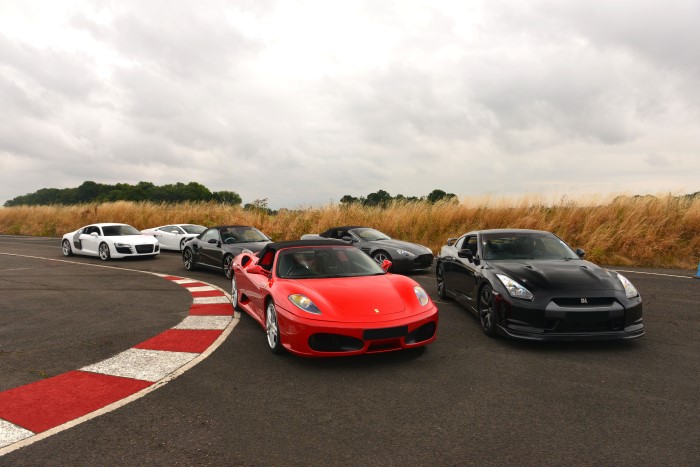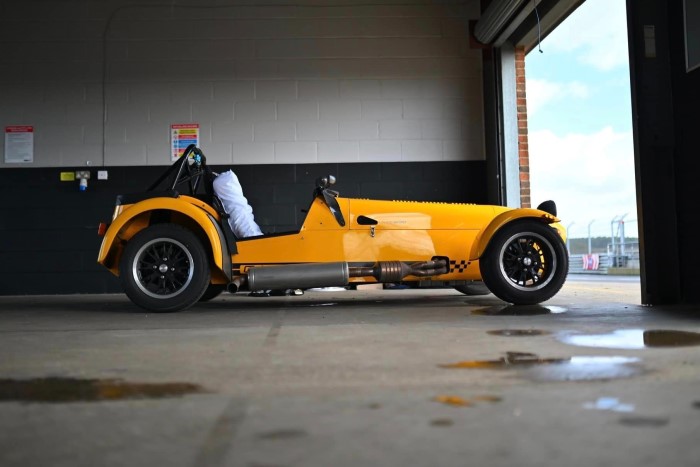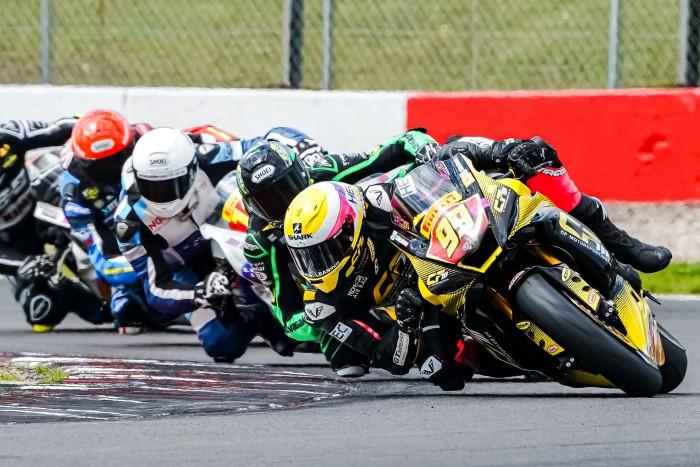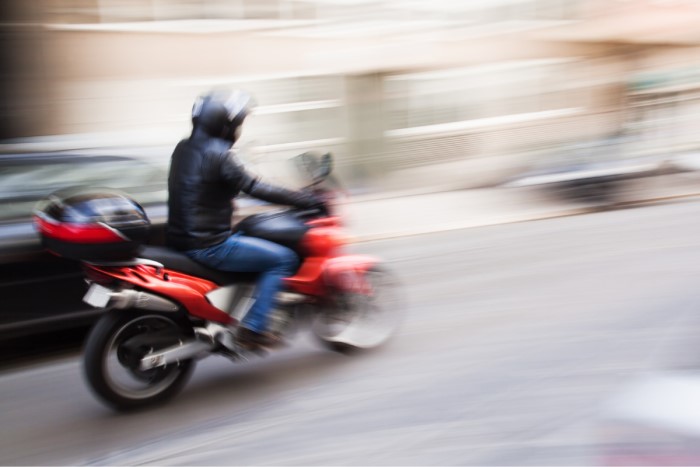OK, so you've mastered rev matching. You know how to avoid understeer. You're now a heel-toe shifting pro and you've read all of our racing tips from the pros. What next? It's time to learn about 'slipstreaming' or 'drafting'.
In this article, we're going to talk about slipstreams: how slipstreaming works, why it's important and how it's used in motorsport with a particular focus on NASCAR and Formula 1.
First thing’s first, what is a slipstream, and what does slipstreaming mean?
The dictionary definition of the word slipstream, in the context of motorsport, is: 'the partial vacuum created in the wake of a moving vehicle, often used by other vehicles in a race to assist in overtaking'.
So essentially slipstreaming is when a vehicle takes advantage of the space behind another vehicle where there are decreased air and wind resistance.
NASCAR's Junior Johnson is widely accredited with being the first to discover the benefits of the slipstream. He used the drafting technique to make up for a lack of straight-line speed and win the 1960 Daytona 500.
As drivers experimented they discovered the benefits of racing following one another, as opposed to running alone. Racers achieved and sustained higher speeds, used less fuel and reduced the number of pit-stops needed, all through drafting.
F1 drivers also make use of slipstream aerodynamics. Creating overtake opportunities through the increased straight-line speed generated by sitting in a cars slipstream. Although slipstreaming can also be detrimental to F1 drivers, which is something we’ll cover.A general rule of thumb is that the more aerodynamic a car is, the less effective it will be at drafting.
 Diagram 1: The middle car travels in an area of low pressure and less air resistance
Diagram 1: The middle car travels in an area of low pressure and less air resistance
Now you know what a slipstream is, we're going to look at how slipstreaming works in sports other than motorsport. And crucially, the science behind it.
As we explained briefly at the top of the article, a slipstream is created behind any moving object where there is some form of resistance. Air, water or otherwise.
In the wake of that object, a lower pressure area, or partial vacuum is left. A closely trailing object will experience reduced drag when sitting in this partial vacuum due to the particles dispersed by the leading object.
In sports, the effects of slipstreaming and drafting are particularly beneficial, where just seconds can be the difference between coming 1st or 2nd.
And it's not just top-level autosports like F1 and NASCAR that take advantage of the performance increases slipstreaming and drafting offer.
Cycling, swimming, running, speed skating and even downhill skateboarding are all slipstream sports.
Slipstreaming is especially popular in the world of professional cycling, with teams and riders making use of slipstreams competitively and also tactically.
Slipstreaming can be seen in use at almost every stage of a race, with the biggest cluster of riders grouping in what's called a peloton, drafting behind one another.
Pro teams may use what's known as the 'Belgian Tourniquet', taking turns at the head of a group of riders to conserve energy.
 Diagram 2: Riders rotate and take turns at the front of the group
Diagram 2: Riders rotate and take turns at the front of the group
Speed-obsessed Guy Martin perfectly demonstrated the benefits of slipstreaming aerodynamics by using a truck to achieve speeds of over 110mph, on a bicycle.
Turning our attention back to motorsport. It's easy to see just how big of an impact slipstreaming has on the performance of racing cars and race results alike.
But it's important to understand that there are distinct differences in the way drafting works in NASCAR and F1 respectively. With the former being able to draft far more efficiently than the latter.
Drafting, which is a word more commonly associated with NASCAR than F1 due to its effectiveness in the sport, is when two cars following each other closely will benefit from higher top speeds than a lone car racing alone.
The lead car will leave an area of low pressure behind it, reducing the aerodynamic resistance on the front of the following car.
This allows the following car to get closer to the lead car, and in turn pushes high-pressure air forward, which means less fast moving air will hit the lead cars spoiler.
Ultimately this reduces drag for both cars and increases performance.
The use of drafting in NASCAR is commonplace at tracks like Talladega Superspeedway and Daytona International Speedway where restrictor plates are required.
And if you’re wondering what a restrictor plate is - it’s a device designed to limit the speed of cars at faster tracks. This often leads to big ‘packs’ of cars forming, reducing air turbulence and making it easier to draft.
Drafting in F1 is slightly more complex. And in certain situations can actually result in reduced performance.
Like in NASCAR, F1’s expertly crafted cars often make use of the region of low pressure behind leading cars. But this is only really beneficial along straights, where not much downforce is required.
This is largely due to what’s known as ‘clean’ (undisturbed) and ‘dirty’ (disturbed) air. Racers sitting in another cars slipstream can maintain the same speed as the car in front, using less throttle. Then, at the right moment, the following car will be able to use full throttle to overtake.
It’s a different story when it comes to drafting around corners and more technical sections of the track.
The dirty or turbulent air can unbalance the aerodynamic devices (think back to the rule of thumb we mentioned earlier), such as the front wing, which means less grip, less downforce and poorer performance.
The effects of dirty air and the struggles cars have had dealing with it have been well documented in F1.
Mercedes championship-winning race car from 2017 was designed to lead and excel in clean air, performing less than adequately when following closely behind another racer.
Different situations within racing mean racers can take advantage of slipstreaming in different ways, with a number of techniques and manoeuvres evolving over the years.
And whilst these techniques often provide valuable boosts to performance and speed, if they’re not executed correctly, the consequences can be disastrous.
Two of the most prominent slipstreaming techniques are the Slingshot Pass and Bump Drafting, with the latter somewhat controversially playing a big role in NASCAR’s recent history.
The Slingshot Pass works in a similar way to cycling’s Belgian Tourniquet technique that we mentioned earlier and is visually the most dramatic slipstreaming manoeuvre.
A trailing car will use the slipstream behind an opponent to gain momentum and ‘sling’ past them. Then using the power left in reserve, due to being towed, the driver will attempt to overtake the lead car.
A great example of the Slingshot Pass can be seen in the video below. With four-time World Champion Lewis Hamilton following, passing, and then taking the inside line through the approaching right-hand corner to complete the overtake.
The footage also demonstrates the risks associated with the slingshot pass and why it can be so dramatic, with Hamilton just centimetres away from colliding with the car next to him.
Moving away from F1 and back to NASCAR. Bump Drafting is a technique that first came to light in the 1980’s and was used prolifically by the Archer Brothers at restrictor plate tracks.
It’s a fairly crude technique that begins as normal drafting, with the following car, sat behind the lead car before quite literally bumping into its rear, in order to keep up with it.
The dangers of a poorly executed Bump Draft can cause cars to lose control and crash. And the manoeuvre has now been banned by NASCAR in both the Camping World Truck Series and Nationwide Series.
In the real world, making use of the car in fronts slipstream isn’t about overtaking. But drafting can have a big impact on your vehicle's fuel consumption.
An experiment conducted by Mythbusters revealed that following just 10 feet behind an HGV will increase your vehicle's fuel economy by a staggering 39%.
This is sometimes called ‘hypermiling’, but is obviously extremely dangerous and should not be tried on public roads.
 Diagram 3: The chart above shows that slipstreaming or 'hypermiling' can save fuel
Diagram 3: The chart above shows that slipstreaming or 'hypermiling' can save fuel
The use of slipstream aerodynamics and drafting in high-speed auto racing has only ever increased and become more prominent since it was first used by NASCAR’s Junior Johnson over half a century ago.
That trend is likely to continue due technological advancements and an increased understanding of aerodynamics.
If like most of us, you don't have access to NASCAR or F1 standard racing cars, you can get first-hand experience of how slipstreams work with a driving experience.
You’ll be accompanied by an expert instructor who’ll know full well the benefits of drafting in a performance supercar.






